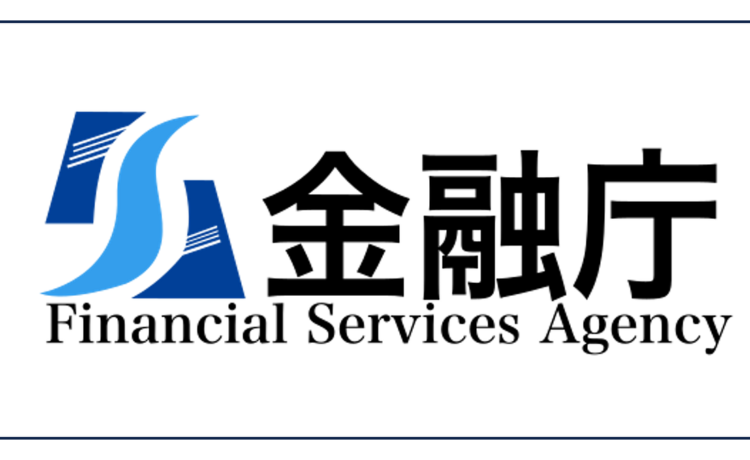The second meeting of the Financial System Council’s “Working Group on Fund Settlement Systems” was held on Thursday, October 17, 2024. As is customary, the secretariat provided explanatory materials which outline the background, discussion points, and reference materials for the working group.
In addition, the meeting materials include a deep dive into Safekeeping Trusts by Japan Securities Finance Trust and Banking (JSF), as well as an external expert opinion letter.
The secretariat’s explanatory materials outline proposed revisions to Japan’s Fund Settlement Act, specifically focusing on two key aspects.
1.1 Asset Preservation Regulations for Money Transfer Businesses
- Background: Currently, the Act mandates that money transfer operators in Japan safeguard all user funds received through escrow, bank guarantees, or trusts. In the event of bankruptcy, the government initiates a refund process through escrow, taking approximately 170 days. This system prioritizes minimizing social and economic impact while safeguarding users, especially considering the prevalence of small transactions.
- Proposed Revision: To enhance user convenience and expedite the refund process, the FSA proposes allowing direct refunds from trust companies or banks alongside the existing methods. However, this raises concerns about potential disadvantages compared to the current system and the need for safeguards like escrow orders to protect user interests.
Discussion Points
- Feasibility of allowing trust companies and banks to directly refund user funds while maintaining the escrow system and escrow orders.
- Addressing potential drawbacks of the new refund method compared to the existing system, especially regarding user protection.
- Applicability of direct refunds to Prepaid Payment Instrument issuers given the lack of user identification requirements for most instruments and the practical challenges of identifying beneficiaries.
1.2 Review of Retention Restrictions for Type 1 Money Transfer Businesses
- Background: Type 1 businesses, handling high-value money transfers, operate under strict retention restrictions. Currently, they cannot accept funds without a concrete transfer order and cannot hold funds beyond the period necessary for operational and technical requirements. This aims to minimize user and societal impact in case of bankruptcy.
Existing Challenges and Needs: The current restrictions pose challenges for:
- Business-to-business Transfers: Requiring separate fund deposits for each high-value transfer to business partners creates significant burdens.
- International Transfers: The need to pre-determine the “date of fund transfer” hinders services that allow users to transfer funds at opportune exchange rates. Uncertainties around processing times at correspondent banks further complicate pre-determining transfer dates.
- Reverse Forex/Bill Collection Services: The inability to determine the exact date of receipt from the payer and subsequent transfer to the recipient due to the nature of these services makes them impractical under the current regulations.
- Simultaneous Operation of Type 1 and Type 2 Businesses: Current regulations prevent transferring funds received for Type 2 services (lower value) to cover Type 1 transfers, forcing users to make separate payments for transfers exceeding the Type 2 limit.
Proposed Revisions
- Extending the Permissible Fund Retention Period: To alleviate user burden, the FSA proposes allowing a retention period of “approximately one month” for necessary operational purposes, considering common business practices. This extension would be limited to businesses adopting new asset preservation methods (like direct refunds) that enable faster user refunds in case of bankruptcy.
- Relaxing the Specificity Requirements for Transfer Orders: Recognizing that the exact “date of fund transfer” cannot always be pre-determined (e.g., reverse forex services), the FSA proposes allowing some flexibility within the permissible retention period for determining the timing of fund transfers.
- Allowing Fund Transfers between Type 1 and Type 2 Businesses: To streamline operations for businesses offering both types of services, the FSA proposes allowing the transfer of funds received for Type 2 services to cover Type 1 transfers. However, this would require strict measures to prevent circumventing the high-value transfer restrictions and ensure that Type 2 funds are not misused for high-value transfers.
Discussion Points for Retention Restriction Revisions
- Appropriateness of allowing a one-month retention period for Type 1 businesses adopting new asset preservation methods.
- Feasibility of allowing the specification of a “fund transfer deadline” alongside or instead of a specific “fund transfer date” while ensuring regulatory compliance.
- Effectiveness of proposed measures to prevent the misuse of Type 2 funds for Type 1 transfers when allowing fund transfers between businesses offering both types of services.
Japan Securities Finance Trust and Banking (JSF) material provides a detailed overview of “Safekeeping Trusts” in Japan, focusing on the procedures and practical considerations involved in handling situations where the trust settlor (typically a financial services provider) faces bankruptcy. The document draws upon the experience of JSF, highlighting its track record in managing such situations and ensuring the return of customer assets.
2.1 What are Safekeeping Trusts?
Safekeeping Trusts are a type of trust mechanism commonly used in Japan to safeguard customer assets, particularly in industries like financial services and crowdfunding, where businesses hold large sums of customer funds. Under this arrangement, a financial services provider (the settlor) entrusts customer assets to a trust bank (the trustee). The trust bank holds and manages these assets separately from its own, ensuring their protection even if the settlor experiences financial difficulties.
2.2 JSF’s Experience with Safekeeping Trusts
JSF has extensive experience in managing Safekeeping Trusts, having handled a diverse range of trusts for various clients, including:
- Financial Instruments Business Operators: Customer Segregation Money Trust, Foreign Exchange Margin Trust, Securities CFD/Overseas Securities Futures Margin Trust, Commodity CFD/Overseas Commodity Futures Margin Trust.
- Cryptoasset Exchange Service Providers: Cryptoasset Custody Trust, Cryptoasset Derivatives Margin Trust.
- Fund Transfer Service Providers: Performance Guarantee Money Trust.
- Other Businesses: Crowdfunding Payment Trust, Real Estate Specific Joint Enterprise Investment Trust.
JSF has also been involved in numerous trust termination cases, primarily due to reasons like:
- Business Withdrawal: Business withdrawal from specific services or industries, often due to regulatory changes or market shifts.
- Business Transfer: Transfer of business to another company, including mergers and acquisitions.
- Voluntary Liquidation: Business closure by the settlor’s own choice.
- Regulatory Actions & Administrative Dispositions: Serious regulatory actions against the settlor, including business license revocations or significant administrative penalties.
Importantly, most trust terminations handled by JSF were not driven by customer protection concerns but rather by business decisions or regulatory actions.
2.3 Handling Trustee Bankruptcy: Key Procedures and Considerations
JSF outlines a step-by-step process for handling situations where the settlor of a Safekeeping Trust faces bankruptcy:
Trigger Event and Information Sharing
- Specific events, such as business license revocation, bankruptcy filings, or cease-and-desist orders, trigger the process.
- The trustee immediately establishes contact with the beneficiary agent and relevant authorities to gather information.
Assessing Customer Asset Protection
- The trustee determines the existence and extent of any customer asset shortfalls.
- If customer asset protection is deemed sufficient, the process may involve a simpler transfer of assets under the existing trust framework.
Transferring Authority and Notifying Customers
- In cases of potential asset shortfalls, the trustee works closely with the beneficiary agent (typically a lawyer or a similar professional appointed to represent customer interests).
- The trustee transfers the authority to manage customer assets to the beneficiary agent.
- The beneficiary agent, in collaboration with the trustee, calculates individual customer claims and notifies them about the situation and the asset recovery process.
Distributing Customer Assets
- The beneficiary agent, with the trustee’s support, establishes a system for receiving and verifying customer claims.
- Once verified, the trustee distributes available assets to customers according to the determined distribution ratio.
2.4 Practical Insights and Lessons Learned
JSF’s experience highlights several crucial aspects of managing Safekeeping Trust terminations:
- Early Preparation is Key: Maintaining accurate and up-to-date customer data is essential for efficient asset distribution.
- Clear Communication is Crucial: Transparent and timely communication with customers throughout the process helps manage expectations and minimize anxieties.
- Collaboration is Essential: Close collaboration between the trustee, beneficiary agent, and relevant authorities ensures a smooth and effective process.
- Flexibility is Important: While having clear contractual provisions is essential, excessive rigidity can hinder the ability to adapt to unforeseen circumstances.
2.5 Addressing Practical Challenges
JSF acknowledges specific challenges encountered during asset recovery:
- Dormant Accounts: Identifying and verifying the rightful owners of dormant accounts can be time-consuming.
- Data Accuracy: Inaccuracies in customer data provided by the settlor can create delays and complicate the verification process.
JSF emphasizes that its experience with Safekeeping Trust terminations, especially in the context of fund transfer service providers, suggests that “dormant accounts” are less likely to be a major issue due to the nature of the business.
The third document for this meeting is an opinion letter submitted by Keiko Ogawa, a Partner and Certified Public Accountant at EY Strategy and Consulting, to the Japanese Financial Services Agency’s working group on the Payment Services Act.
Key points:
- Direct refund by banks and trust companies: The letter raises concerns about the feasibility and cost of direct refunds to users from banks and trust companies. It emphasizes the need for thorough analysis of additional costs and potential burdens on both financial institutions and users.
- Review of fund retention regulations for Type I Money Transfer Businesses:
– One-month retention: The letter supports the proposal to allow retention of funds for “approximately one month” if necessary for operational reasons, considering both user convenience and risk management. It suggests setting limits based on factors like the business operator’s credit risk score to mitigate risks associated with longer retention periods.
– Deadline for moving funds: The letter agrees with specifying a “deadline for moving funds” in addition to a “designated date for moving funds,” emphasizing user and business convenience. - Transfer of funds related to Type II Money Transfer Businesses to funds related to Type I Money Transfer Businesses: The letter points out that allowing such transfers could be a violation of the current law prohibiting fund retention for Type I Money Transfer Businesses. It highlights the need for measures to address potential risks to user asset protection and calls for clarity on the verification process for determining the purpose of retained funds exceeding the JPY 1 million limit for Type II businesses.
Overall, the letter supports the proposed revisions while emphasizing the need for thorough consideration of potential risks and burdens on both users and businesses, particularly regarding direct refunds and the handling of funds related to different types of money transfer businesses. It calls for clear guidelines and practical solutions to ensure smooth implementation and user protection.
















